Carcassonne is a tile-laying, area control game.
Title: Carcassonne
Year Published: 2000
Designer: Klaus-Jürgen Wrede
Publisher: Rio Grande Games/Z-Man Games
Players: 2-5
Game Time: 45+ Mins
Set-up Time: >1 Mins
Ages: 10+
Theme: Medieval France
Mechanic: Tile Laying
How to win: Score the most points
Game Description
Carcassonne is a tile-placement game in which the players draw and place a tile with a piece of southern French landscape on it. The tile might feature a city, a road, a cloister, grassland or some combination thereof, and it must be placed adjacent to tiles that have already been played, in such a way that cities are connected to cities, roads to roads, etcetera. Having placed a tile, the player can then decide to place one of his meeples on one of the areas on it: on the city as a knight, on the road as a robber, on a cloister as a monk, or on the grass as a farmer. When that area is complete, that meeple scores points for its owner.
Carcassonne 20th Anniversary How to Play
Setup
Put the start tile in the middle of the table.
Each player takes 8 Followers of their colour and places 1 of them on the scoring track.
Determine the start player.
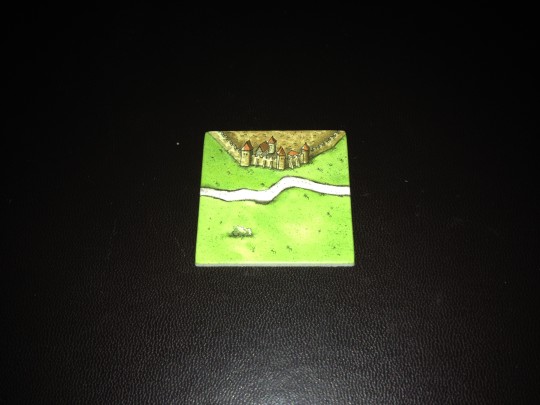
Carcassonne Game Play
In turn order players…
MUST draw a tile
MUST play a tile
The tile must be orthogonally adjacent to an existing tile and the artwork (Fields, Cities, Roads) must match up.
MAY deploy a follower onto the newly placed tile
To deploy a Follower, the player takes one from their supply and places it on the tile.
If it is in a City, it becomes a Knight.
On a Road, it becomes a Thief.
If it is in a Cloister, it becomes a Monk.
You lay a meeple down in a field, it becomes a Farmer.
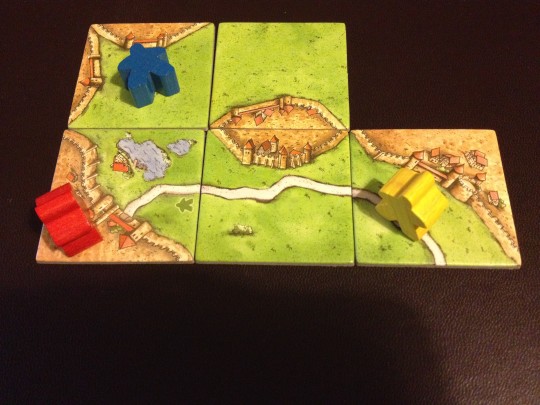
You can not place a Follower on a City, Road, Cloister or Field already occupied by another Follower.
MUST score the tile (If applicable)
Scoring Meeples
If a City is completed, meaning the city wall fully encircles it, the player with the most Knights in that city scores 2 points for each tile used and 2 points for each pennant in that City. In the case of a tie, both players score points. If the City is made up of only 2 tiles, the player only gets 1 point per tile. When scored, all followers used are returned to the player.
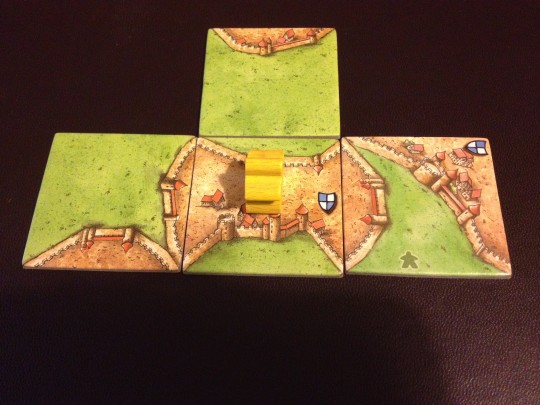
If a Road is completed, meaning the road terminates at either end or creates a circle, the player with the most Thieves on that road scores 1 point for each tile used. In the case of a tie, both players score points. When scored, all followers used are returned to the player.
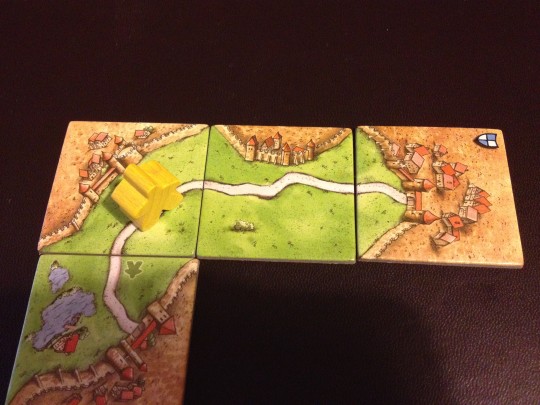
If a Cloister is completed, meaning the cloister tiles is completely surrounded by 8 other tiles, the player with the Monk scores 9 points. When scored, the Monk is returned to the player.
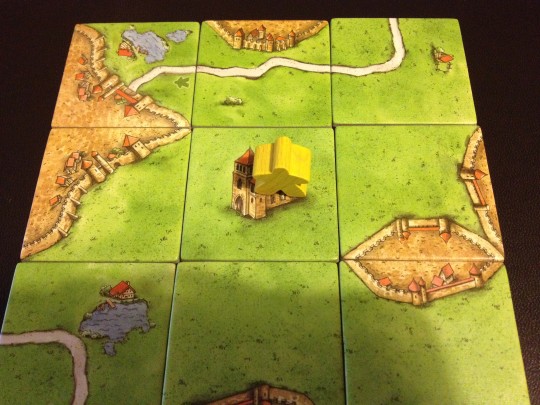
A Farmer is not scored until the end of the game so a Farmer will not return to your supply once played.
Game End
When the last tile is placed, the game ends.
Knights, Thieves and Monks that remain on the board score points…
Knights get 1 point per tile and 1 point per pennant in incomplete Cities.
Thieves get 1 point per tile for incomplete Roads.
Monks get 1 point for their Cloister and 1 point for each tile surrounding it.
Farmers get 4 points for each COMPLETE city in its field. If multiple Farmers supply the same City then the player with the most Farmers gets the points. In the case of a tie, both players get points.
The most points win.
Carcassonne Round-Up
This is one of those games that is so simple anyone can play it but there is enough there to make you think.
You need to maximise points, not miss an opportunity, steal from opponents where you can and make sure you don’t leave all your Workers on the board.
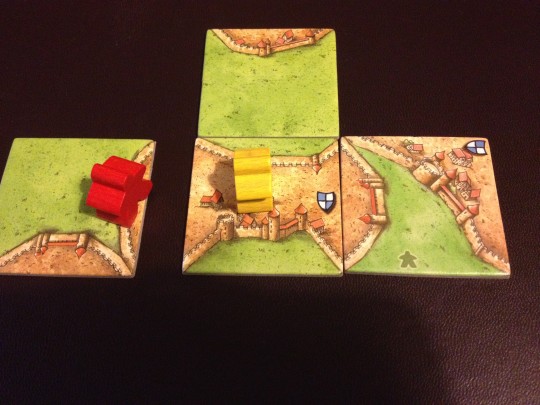
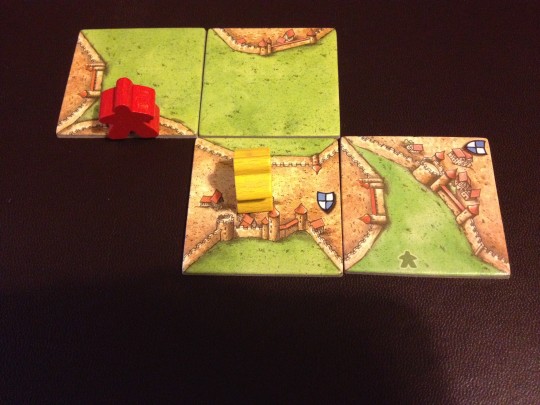
Reports of Farmers being ‘overpowered’ is odd seeing as EVERYONE HAS THEM! If you’re brave enough to commit a worker to the board for the rest of the game then play a Farmer. If not, don’t complain when an opponent does.
Expansions
Although there are a lot of expansions available, I only play with a couple…
Rivers and Rivers 2 replace the starting tile with a long River piece that the players build before starting on the regular tiles. This gives a wide base for the game to start instead of a single tile.
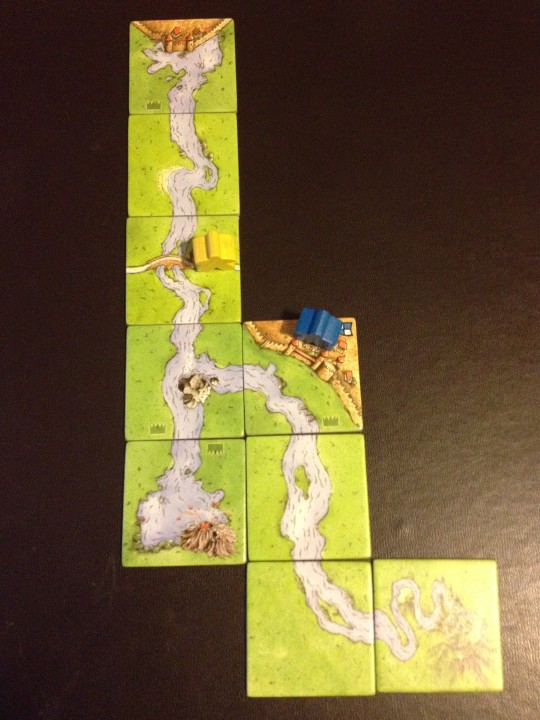
Inns and Cathedrals give players a large Worker amongst other things. This is physically larger than the standard Worker meeple and counts as 2 when working out who controls an area.
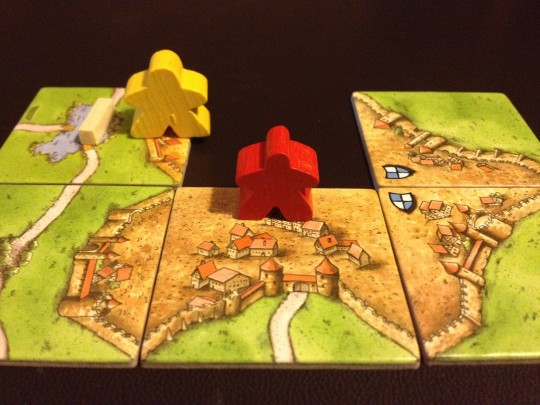
I also play with the Ferries which give a few tiles with roads connecting to a lake from all four sides. You play a wooden piece on the tile to choose which way the Ferry carries the path. This counts as a connected path and the two unchosen sides count as that road terminating.
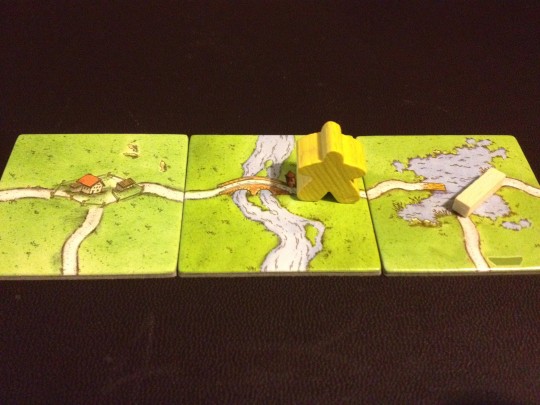
Carcassonne Rating
A game I like to play and will stay in my collection for a long long time.
I give it 7/10
This game is a member of my Board Game Hall of Fame!
Carcassonne Ups and Downs
Carcassonne Initial Impressions – May 2013
To be honest, the box looks dull, the idea of the game sounds dull, tile-laying doesn’t excite me and building a piece of the Southern French landscape? ew?
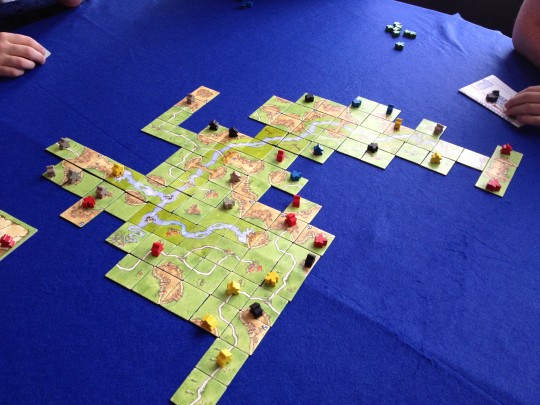
Putting Meeples down doesn’t guarantee points, you can be outmuscled. At the point a Road, City or Field is scored, whoever has the most Meeples will win the points. Small Meeples count as 1, and the Large Meeple counts as 2.
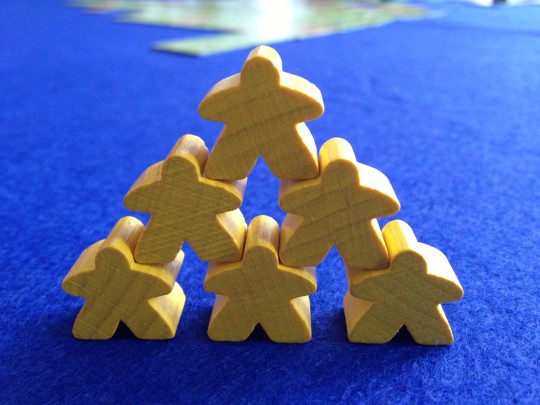
The GOOD thing is that you can’t place a Meeple on the same Road, City or Field with one on already! In order to ‘takeover’ the points, you have to put your Meeples down and then connect the relevant area later on. This makes gameplay VERY tactical. If someone snatches your points, you know they earned it.
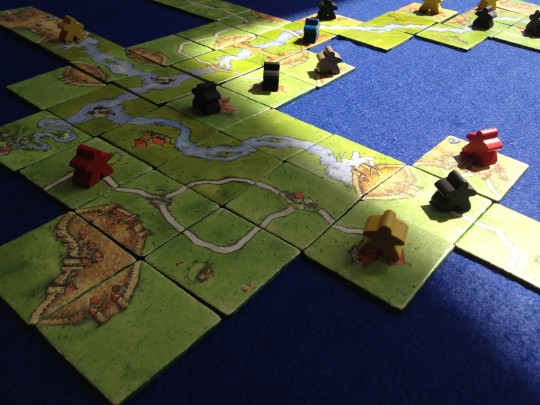
So that’s pretty much it. It really was a thoughtful and fun game, not too complicated but complex enough that it was a challenge. I came 4th (out of 5)
I’m hoping to get this game at some point, I need to play it again.
Jesta ThaRogue

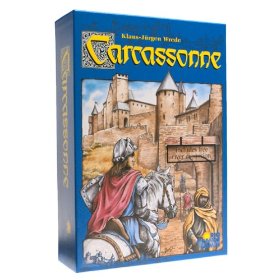
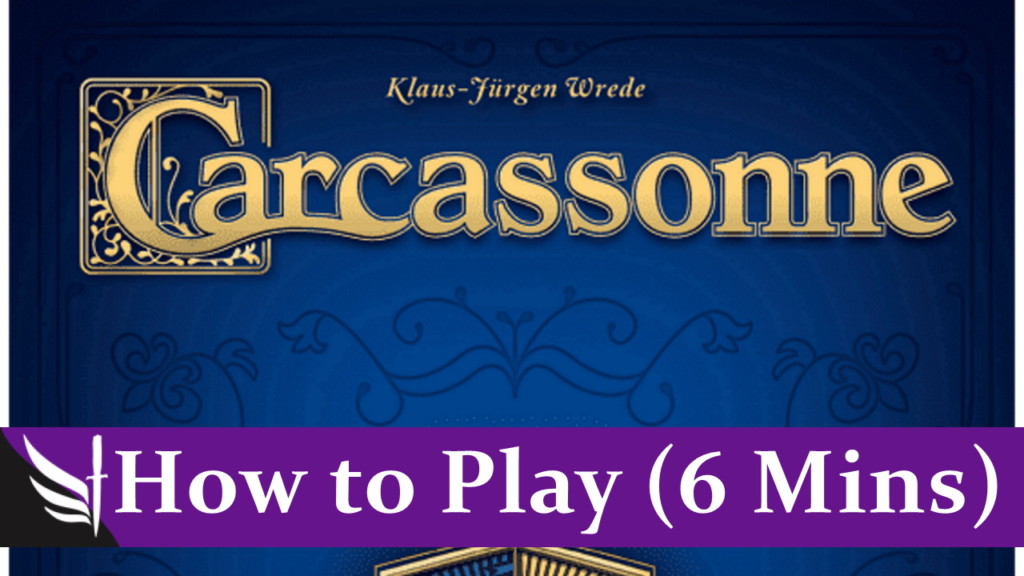
Leave a Reply